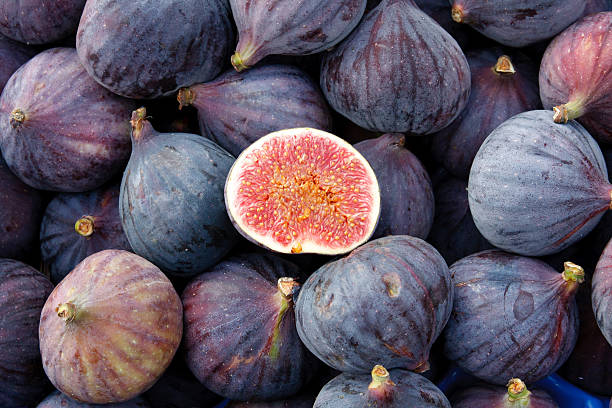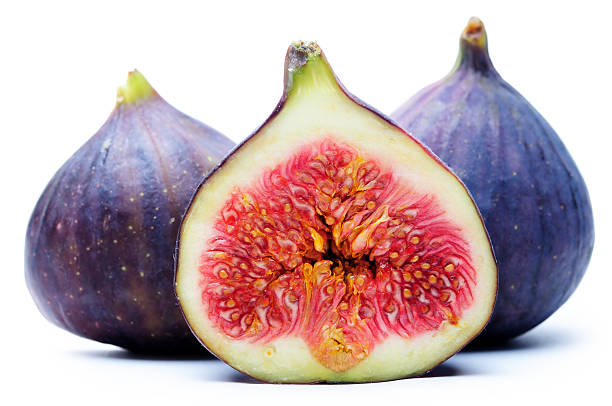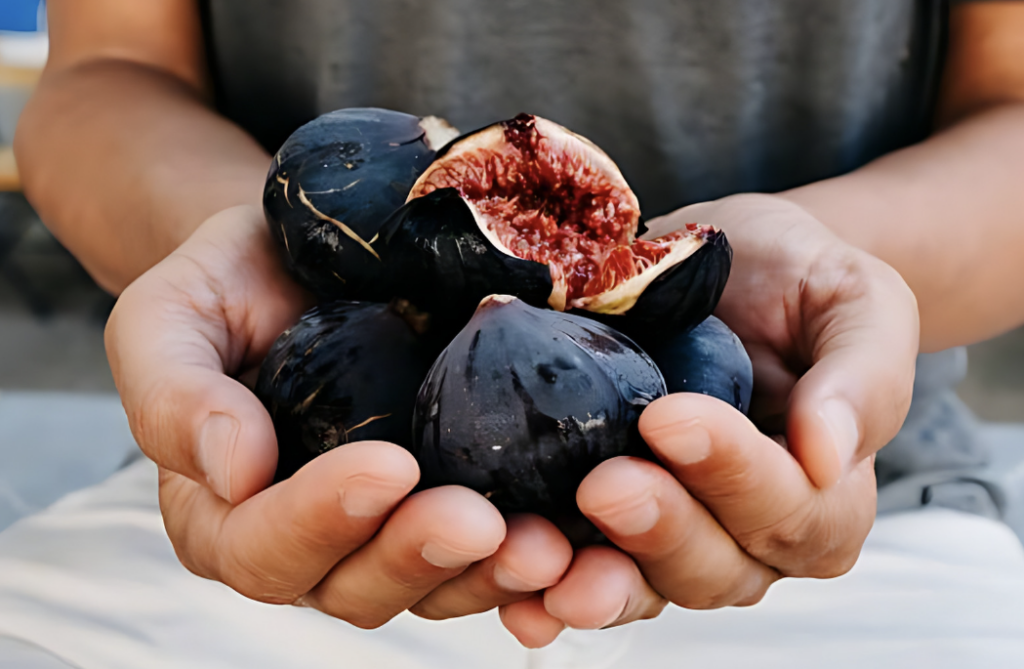Healthy Recipes, Kinds of Diets
Transform Your Diet with the Help of Figs
Looking to incorporate a healthy and delicious ingredient into your diet? Look no farther than figs. Figs are a flexible fruit that may be included in a variety of diets due to their high fiber, vitamin, mineral, and antioxidant content. Whether you’re on a low-calorie, gluten-free, or vegetarian diet, figs can make an excellent complement to your meals and snacks.
For individuals on a low-calorie diet, figs provide a delicious and guilt-free sweet treat. With their natural sweetness and fiber content, these fruits can help reduce cravings and keep you fuller for longer. If you’re following a gluten-free diet, figs can serve as a nutritious substitute for baked items that generally contain wheat flour. If you’re on a vegetarian or vegan diet, figs are an excellent source of plant-based protein and may be utilized in both sweet and savory recipes.
So, whether you’re attempting to lose weight, manage a dietary restriction, or simply want to incorporate more healthy foods into your meals, consider including figs in your diet. Let’s look at some recommendations and ideas for integrating figs in particular diets.
Figs in a Vegan Diet
Figs are an excellent complement to a vegan diet because of their variety and nutritional value. Also Figs, as a plant-based protein source, can help vegan dishes include more protein. Furthermore, figs are high in calcium, iron, and other vital elements that are commonly deficient in vegan diets.
One simple method to incorporate figs into a vegan diet is to mix them into smoothies or cereal. Blend fresh or dried figs with your favorite plant-based milk, fruits, and veggies to make a nutrient-dense smoothie. Alternatively, cut figs and sprinkle them over your morning porridge for a delicious and filling breakfast.
For savory recipes, consider figs as a topping on vegan pizzas or salads. Their natural sweetness complements tart dressings, and the mix of flavors may take a simple salad or pizza to the next level. Stuffing figs with vegan cheese or nut butter makes a tasty appetizer or snack.

Figs in a Gluten-Free Diet
If you follow a gluten-free diet, figs can be an excellent substitute for wheat-based ingredients in baked items. Instead of wheat flour, consider using fig purée or finely chopped figs in your recipes. Figs’ natural sweetness and moisture content can help make gluten-free baked items more moist and tasty.
For example, you can replace some of the flour in muffin or bread recipes with fig purée. The figs offer a natural sweetness to the baked items and keep them moist, eliminating the need for additional sugars or fats. You may also try using dried figs instead of raisins or other dried fruits in your favorite gluten-free cookie recipes.
Figs can be used in gluten-free porridge, granola, and energy bars, as well as baked goods. Simply cut dried figs and combine with gluten-free oats, almonds, and seeds to make a tasty and nutritious snack. The natural sugars in figs give a rapid source of energy, making them an excellent choice for pre- or post-workout snacking.
Figs in a Low-Carb Diet
Figs should be used in moderation by individuals on a low-carb diet due to their natural sugar level. They can, however, be enjoyed as a healthy and satisfying supplement to meals and snacks.
Figs can be incorporated into a low-carb diet by topping salads or grilled meats. Their sweet and tangy flavor compliments savory foods while providing a blast of freshness. You can also load figs with low-carb foods like goat cheese, almonds, or walnuts to make a tasty appetizer.
If you want something sweet, try preparing a low-carb fig smoothie. Combine fresh figs, unsweetened almond milk, a handful of spinach, and a scoop of protein powder for a satisfying and nutritious snack. The fiber in figs slows the digestion of carbohydrates, avoiding blood sugar rises.

Figs in a Paleo Diet
The paleo diet emphasizes entire, unadulterated foods, thus figs are an ideal choice for anyone following this eating plan. Figs are a natural source of energy and include key elements that can help with a balanced paleo diet.
One method to incorporate figs into a paleo diet is to use them as a natural sweetener in homemade energy bars or balls. Combine dried figs, almonds, seeds, and a small amount of coconut oil to make a nutritious and delectable snack that can be eaten on the move.
Figs can also be included in paleo sweets. Make a simple fig and coconut milk pudding by combining fresh figs with coconut milk and a splash of honey. The creamy and sweet dessert is a guilt-free way to satisfy your sweet tooth while following a paleo diet.
Figs in a Mediterranean Diet
The Mediterranean diet is distinguished by its concentration on fresh fruits, vegetables, whole grains, and healthy fats. Figs are an excellent addition to this diet due to their high fiber, vitamin, and mineral content.
One traditional method to eat figs in a Mediterranean diet is with cheese and nuts. Arrange fresh figs on a dish, accompanied by a choice of cheeses, such as goat cheese or feta, and nuts, such as almonds or walnuts. This simple yet gorgeous appetizer is a Mediterranean culinary staple.
Figs can also be used in Mediterranean-style salads and grain bowls. Mix fresh figs with mixed greens, olives, cucumbers, and a sprinkle of olive oil and balsamic vinegar to make a delightful and nutritious salad. For an added blast of flavor, mix chopped figs into quinoa or bulgur wheat salads.

Creative Ways to Incorporate Figs into Meals and Snacks
In addition to particular diets, there are other innovative methods to incorporate figs into your daily meals and snacks. Here are a few ideas that will inspire you:
- Fig and almond butter toast: Spread almond butter on whole-grain toast and top with sliced fresh figs for a delicious and nutritious breakfast or snack.
- Fig and prosciutto roll-ups: Wrap figs with slices of prosciutto for an elegant and flavorful appetizer or party snack.
- Fig and yogurt parfait: Layer Greek yogurt, chopped figs, and granola in a glass for a quick and satisfying breakfast or dessert.
- Fig and walnut salad: Toss mixed greens, fresh figs, walnuts, and a light vinaigrette dressing for a simple and refreshing salad.
- Fig and goat cheese flatbread: Spread goat cheese on a pre-made flatbread and top with sliced figs, arugula, and a drizzle of honey for a gourmet-style lunch or dinner.
Fig Recipes for Specific Diets
If you’re looking for specific recipes that incorporate figs into various diets, here are a few ideas to get you started:
- Vegan Fig and Quinoa Salad: Combine cooked quinoa with chopped fresh figs, cucumbers, cherry tomatoes, avocado, and a lemon vinaigrette for a healthy and satisfying vegan meal.
- Gluten-Free Fig and Almond Muffins: Replace wheat flour with almond flour and use fig puree or chopped dried figs to create moist and flavorful gluten-free muffins.
- Low-Carb Fig and Goat Cheese Stuffed Chicken: Stuff boneless chicken breasts with a mixture of goat cheese, chopped figs, and fresh herbs, then bake until cooked through for a delicious and low-carb main dish.
- Paleo Fig and Walnut Energy Balls: Blend dried figs, walnuts, almond butter, and a touch of honey in a food processor, then roll into bite-sized balls for a nutritious and portable paleo snack.
- Mediterranean Fig and Couscous Salad: Combine cooked couscous with chopped fresh figs, olives, feta cheese, cherry tomatoes, and a lemon-herb dressing for a refreshing and flavorful Mediterranean-inspired salad.
Buying and Storing Figs
When purchasing figs, look for those that are plump, tender, and slightly wrinkled. Avoid figs that are mushy or bruised. If fresh figs are not available, dried figs can be used in a variety of recipes.
Store fresh figs in a single layer in the refrigerator. They will keep for a few of days. If you have an oversupply of figs, you can freeze them for future use. Simply wash and dry the figs, then store them in airtight containers or freezer bags.
Conclusion
Incorporating figs into my specific diet has been a delightful experience, adding a boost of flavor, nutrition, and variety to my meals and snacks. As someone following a specific dietary plan, such as vegan, gluten-free, low-carb, paleo, or Mediterranean, I’ve found that figs are a delicious and versatile ingredient that can be enjoyed in various ways. From sweet to savory dishes, there are countless possibilities to explore and savor the natural sweetness and nutritional benefits that figs bring to my diet. So, if you haven’t tried them yet, I encourage you to give figs a chance and discover how they can enhance your specific dietary preferences. Happy fig eating!
Trusted Health, Wellness, and Medical advice for your well-being


